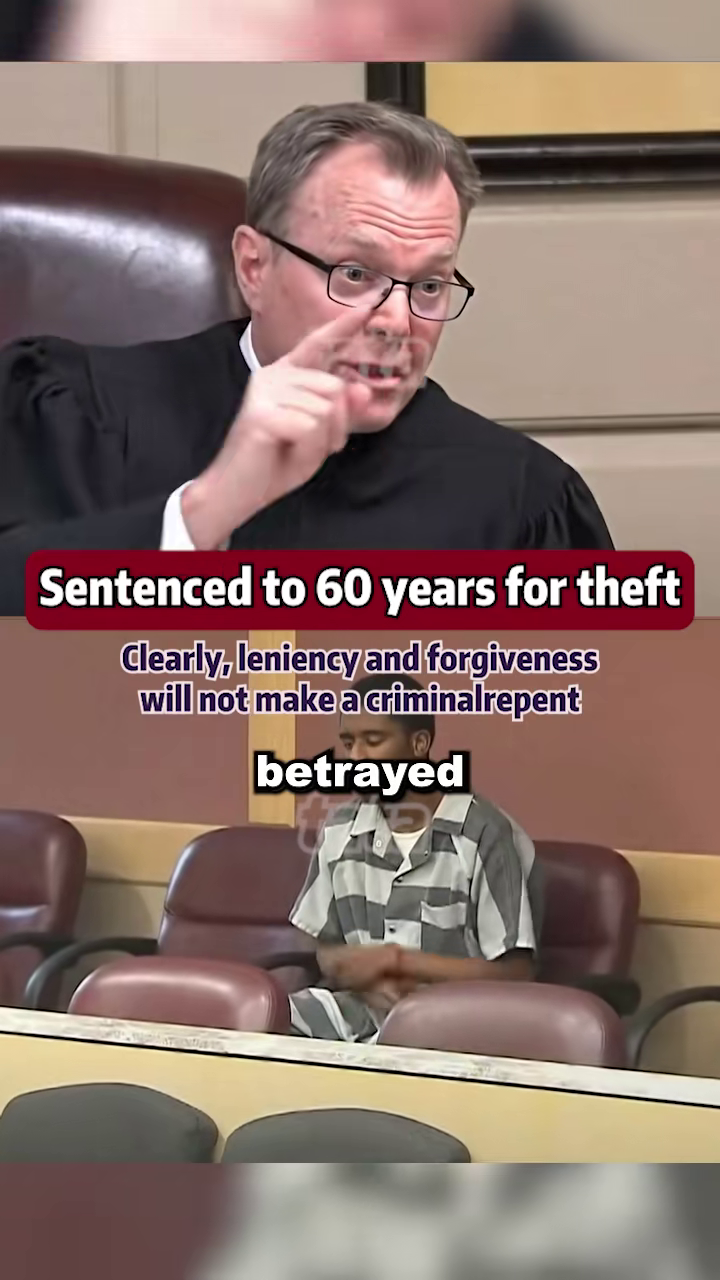In the complex world of criminal justice, cases of leniency often spark debate about fairness, rehabilitation, and consequences. One such case involves Herbert Smith, a man whose initial harsh prison sentence was suspended, only to see him re-arrested for violating parole. This story offers insight into the challenges of balancing mercy with accountability and the harsh reality of second chances gone wrong.
Background: Herbert Smith’s Initial Crimes
Herbert Smith’s troubles with the law began years before the events that would put him in the national spotlight. His record includes:
-
Burglary: Breaking and entering into private property.
-
Grand Theft: Theft of valuable property exceeding state thresholds.
-
Probation Violations: Repeated failure to comply with court-mandated rules.
Due to the cumulative nature of these offenses, the court initially imposed a potential 60-year prison sentence, reflecting the severity of repeated criminal behavior. Smith’s case was a textbook example of the criminal justice system attempting to balance punishment with public safety.
The Suspended Sentence: A Judge’s Leniency
The story took a surprising turn when public sentiment and community support influenced judicial decisions. During the sentencing phase:
-
Community Impact: Advocates for Smith argued that he had shown remorse and could be rehabilitated if given another chance.
-
Suspension of Sentence: One judge agreed to suspend the original 60-year sentence, placing Smith on probation instead.
-
Conditions: The court made it clear that any violation of probation would immediately reinstate the original sentence. The leniency was intended as both a second chance and a test of Smith’s willingness to reform.
The decision sparked discussion about whether the criminal justice system should prioritize rehabilitation over punitive measures, especially in cases involving non-violent property crimes.
The Parole Violation: Second Chance Lost
Unfortunately, Herbert Smith struggled to comply with the strict conditions of his probation. Within a year:
-
Violation of Terms: Smith was arrested for failing to adhere to parole conditions. Specific details included missing check-ins and possible minor infractions that demonstrated non-compliance.
-
Judicial Response: The original judge reinstated the 60-year sentence, expressing disappointment in Smith’s inability to uphold the trust granted to him. In court, the judge sternly instructed Smith:
“Go to jail and reflect on your actions.”
This moment highlighted the harsh reality of second chances: leniency is conditional, and repeated violations often result in more severe consequences than the original offense might have suggested.
Legal Implications and Lessons
Herbert Smith’s case serves as an important example in discussions of justice and rehabilitation:
-
The Limits of Leniency: Judges may grant probation or suspended sentences, but continued violations undermine trust and lead to reinstated sentences.
-
Accountability Matters: Rehabilitation depends on the offender actively participating in reform. Smith’s actions demonstrated the system’s dependence on personal responsibility.
-
Public Perception: Community support can influence sentencing, but it cannot override the consequences of non-compliance.
-
Criminal Justice Debate: Cases like this raise questions about the balance between punishment, second chances, and protecting society from repeat offenders.
How Probation and Parole Work
For readers unfamiliar with the system:
-
Probation: A court allows a convicted individual to remain in the community under supervision instead of serving a full prison term. Conditions typically include regular check-ins, avoiding criminal activity, and maintaining employment or education.
-
Parole: The conditional release of a prisoner before completing the maximum sentence, often contingent on good behavior and adherence to strict rules.
In both systems, failure to comply can trigger immediate re-incarceration, often for the full original sentence, which was precisely what happened to Herbert Smith.
Community Reactions
The video footage and public commentary reveal mixed reactions:
-
Supporters: Some viewed Smith as a man who deserved a chance to rehabilitate, arguing that lengthy sentences can prevent personal growth.
-
Critics: Others expressed frustration, asserting that Smith squandered a rare opportunity, putting the justice system and public trust at risk.
The story underscores a recurring dilemma: how much leniency is appropriate for repeat offenders, and when should the system enforce strict accountability?
The Role of Media in High-Profile Cases
The Herbert Smith case gained attention due to:
-
Video Coverage: Clips showed the courtroom proceedings and reactions from both the judge and the community.
-
Dramatic Narrative: Media outlets highlighted the suspense and legal drama surrounding the suspended sentence and subsequent violation.
-
Educational Value: The case serves as an example of how second chances operate under the law and the consequences of failing to respect them.
Psychological Perspective
Experts studying criminal behavior emphasize:
-
Risk of Recidivism: Individuals with a history of repeated offenses, particularly theft and burglary, often face higher chances of re-offending.
-
Importance of Supervision: Probation and parole systems are designed to guide behavior, but success depends on consistent adherence to rules.
-
Impact of Early Leniency: While leniency can motivate reform, it may also create a false sense of freedom if conditions are not clearly enforced.
Conclusion
The Herbert Smith saga is a cautionary tale about the fragility of second chances in the criminal justice system. From an initial 60-year sentence to a suspended probation and eventual re-arrest, Smith’s story illustrates:
-
The importance of personal responsibility for rehabilitation.
-
How leniency by the court is conditional and not permanent.
-
The delicate balance between mercy, justice, and public safety.
While society debates the merits of giving repeat offenders a second chance, the ultimate lesson remains clear: trust granted by the justice system must be earned and maintained, or the consequences will be severe.
Herbert Smith’s journey through the courts serves as a stark reminder that in the world of criminal justice, choices matter — and a second chance is a privilege, not a guarantee.

